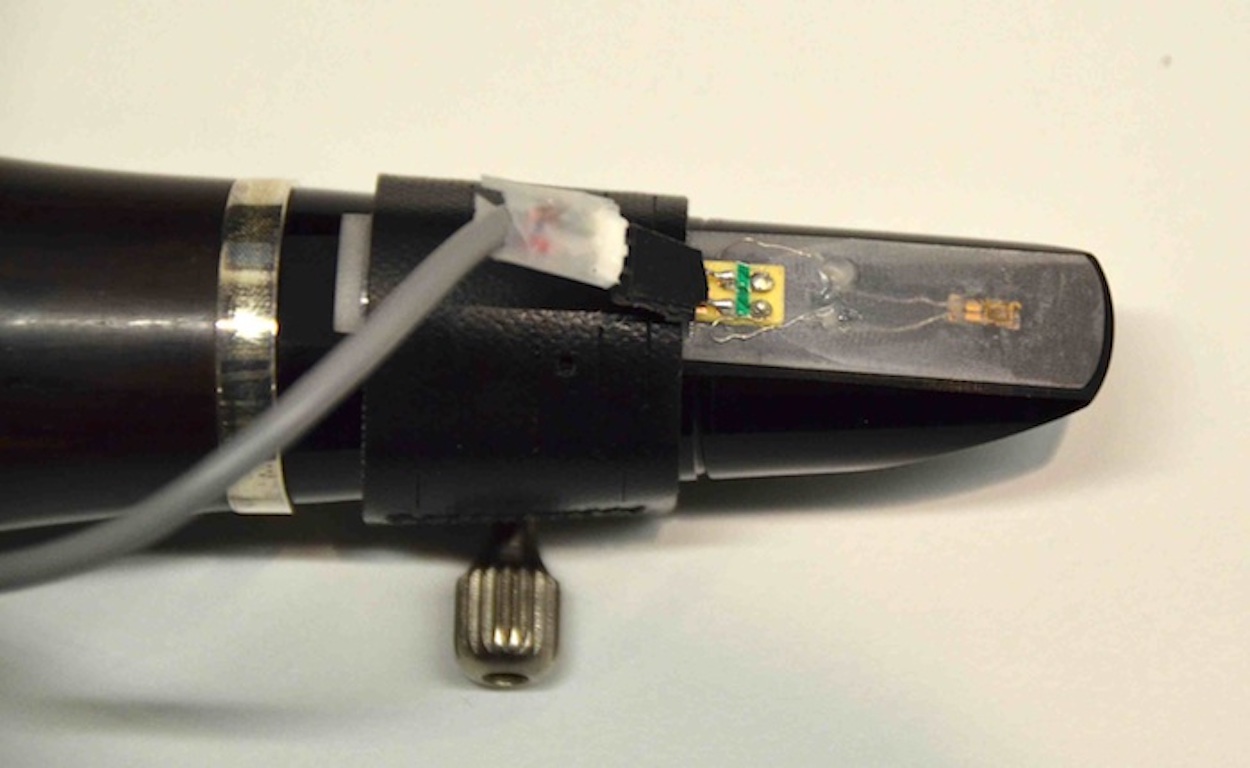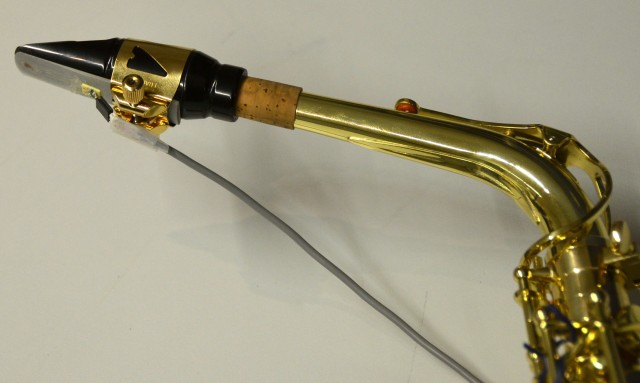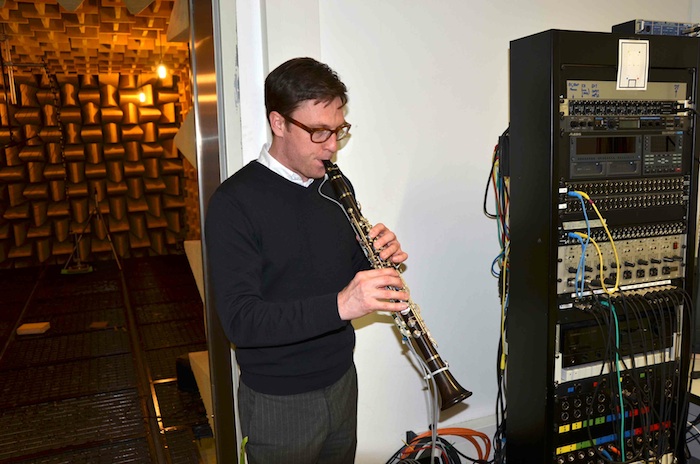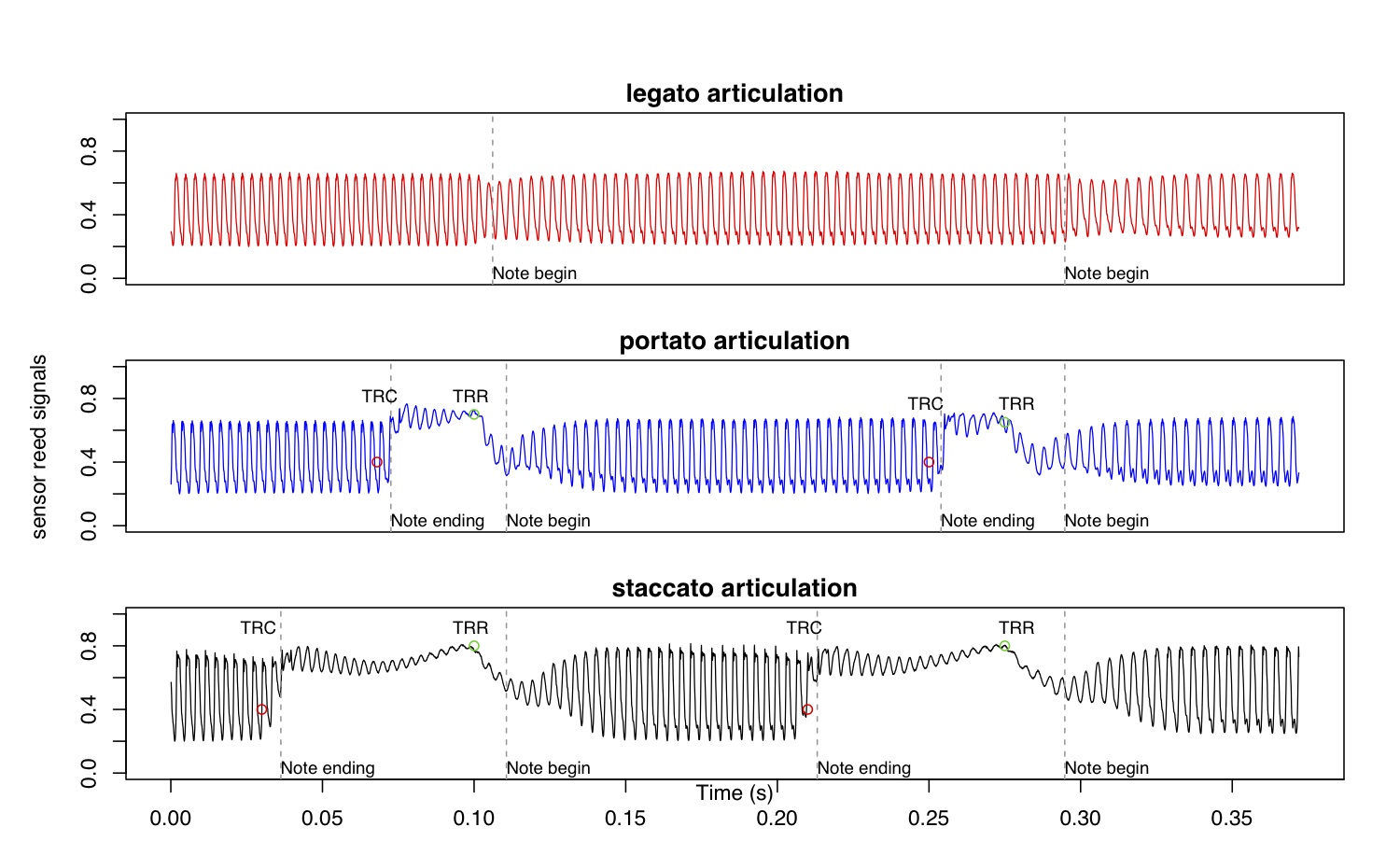Augmented Instruments (Research Project 2011—2014)
Sensor technology is everywhere around us (a cheap smartphone has more than 10 sensors) and can provide a continuous stream of data for further processing and analysis. Sensors can also be attached to musical instruments and track human-instrument interactions. The gained data can either be used to control live-electronics [1], to pick-up the instrument sound [2], or to measure playing skills [3, 4].




Saxophone and clarinet reeds with strain-gauge sensors with according recorded with an alto-saxophone [4].
[1] Hofmann, A., Mayer, A., & Goebl, W. (2013). Towards a live-electronic setup with a sensor-reed saxophone and Csound. In Linux Audio Conference (pp. 153–156).
[2] Hofmann, A., Chatziioannou, V., Mayer, A., & Hartmann, H. (2016). Development of Fibre Polymer Sensor Reeds for Saxophone and Clarinet. In Proceedings of the NIME 2016 (pp. 65–68). Brisbane, AU: Griffith University.
[3] Hofmann, A., & Goebl, W. (2016). Finger forces in Clarinet playing. Frontiers In Psychology. Performance Science, 7(1140). doi:10.3389/fpsyg.2016.01140
[4] Hofmann, A., & Goebl, W. (2014). Production and perception of legato, portato and staccato articulation in saxophone playing. Frontiers In Psychology. Cognitive Science, 5(690). doi:10.3389/fpsyg.2014.00690
This research was carried out at the University of Music and Performing Arts Vienna, within the FWF-Project (P23248) “Measurement and analysis of finger forces in clarinet playing”.

